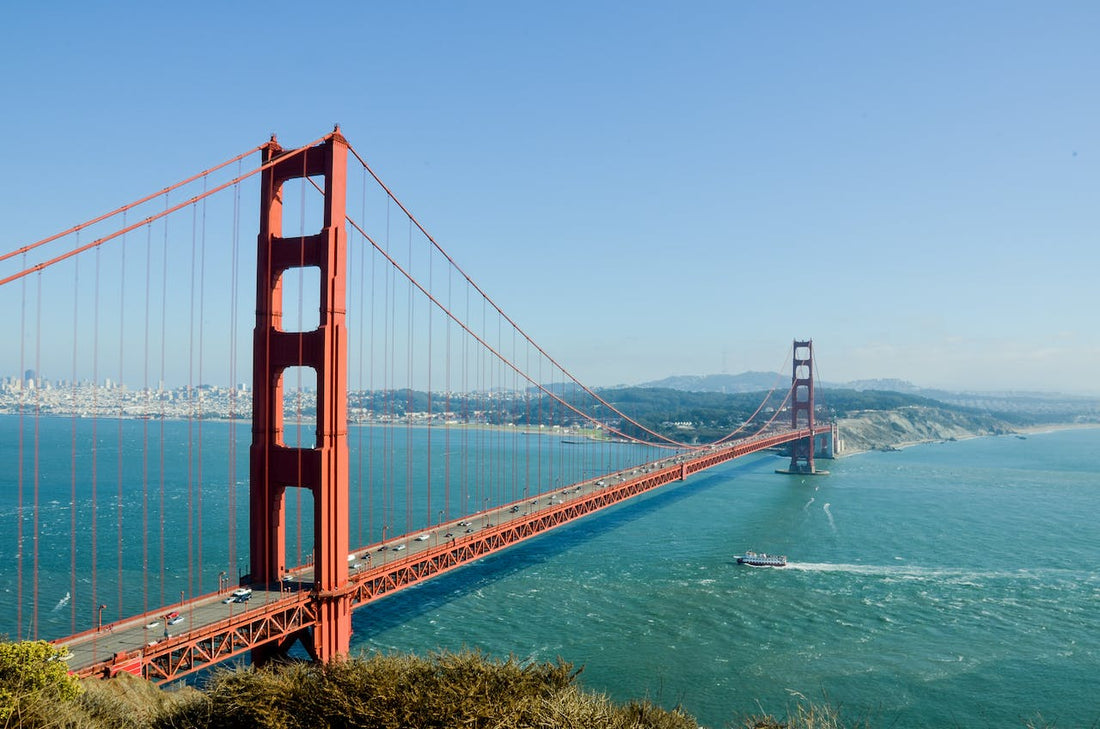Beauty in architecture is a subjective concept that transcends cultural boundaries. As integral parts of global infrastructure, bridges not only serve functional purposes but also inspire the human imagination with their aesthetics. This article explores some of the world's most beautiful bridges, examining their history, their engineering marvels, and their cultural significance.
Golden Gate Bridge
The Golden Gate Bridge is a San Francisco landmark, one of the most beautiful bridges in the world, with a rich history and stunning design. Its engineering marvel and the panoramic views it offers visitors make it a must-see. Recent conservation efforts have improved its structural integrity and ensured it remains a timeless masterpiece.
Completed in 1937, the Golden Gate Bridge holds a unique place in American history. Its construction during the Great Depression created jobs and demonstrated the nation's determination to overcome challenges. The bridge quickly became a symbol of hope and progress.
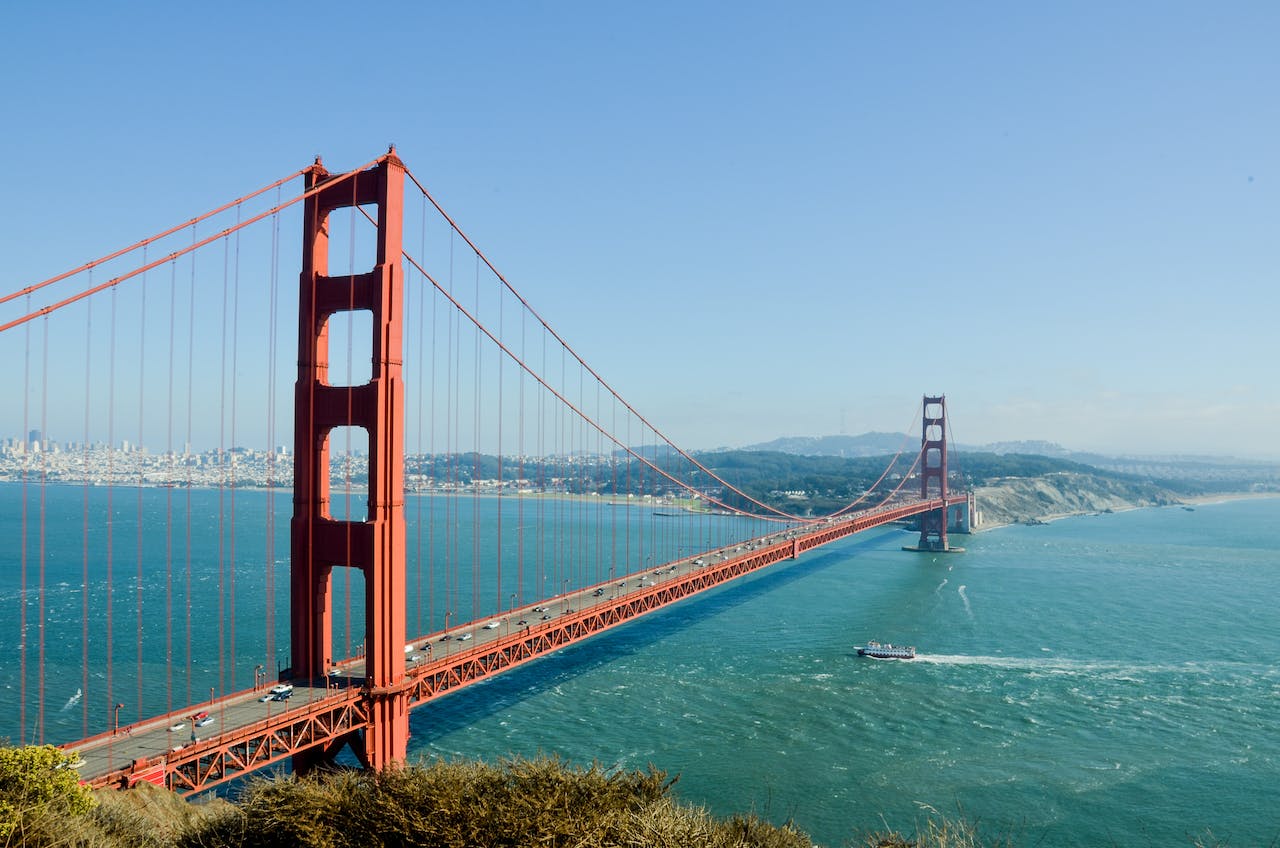

The bridge's engineering skill is evident in its Art Deco design and innovative construction techniques. Chief engineer Joseph Strauss and architect Irving Morrow worked together to build a suspension bridge with a main span of 4,200 feet, making it one of the longest and most notable of its time. The striking International Orange color was chosen not only for its visibility in San Francisco's frequent fog, but also for its aesthetic appeal.
One of the unique features of the Golden Gate Bridge is the pedestrian walkway, which allows visitors to experience the bridge up close. The views from the trail are simply spectacular, offering panoramic views of San Francisco Bay, Alcatraz Island, and the city skyline. The bridge's 746-foot-tall towers are an impressive sight both up close and from afar.
Preserving the Golden Gate Bridge for future generations is a top priority. Ongoing maintenance and preservation measures include periodic inspections, paint restoration and seismic safety to ensure the structural integrity of the bridge. Recent improvements, such as the installation of LED lights in 2013, add to its nighttime beauty, transforming it into a dazzling spectacle of colors on one of the most beautiful bridges in the world.
Tower Bridge, London
Rich in history and architectural brilliance, Tower Bridge in London is not just a bridge over the River Thames, but an enchanting spectacle. Their unique features and nighttime lighting make them even more fascinating. In addition to its architectural significance, the bridge has also played an important role in historical events and has symbolic significance for the city, making it one of the most beautiful bridges in the world.
Tower Bridge was built over the River Thames in 1894 and was designed by Sir Horace Jones and Sir John Wolfe Barry. The aim of the construction was to ease road traffic whilst maintaining access to the Pool of London docks. The bridge takes its name from the nearby Tower of London and has since become an integral part of the London landscape.
What makes Tower Bridge so special is its folding design, which allows the middle bridge to be raised to accommodate shipping traffic. The twin towers with neo-Gothic architectural style contribute to the bridge's distinctive appearance. The hydraulic system for lifting the flaps was a marvel of Victorian engineering and is still in use today.
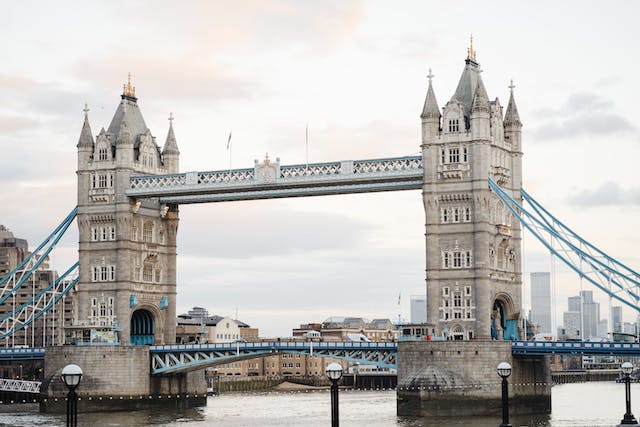

As darkness falls, Tower Bridge transforms into a luminous spectacle. Thousands of LED lights decorate its facade, creating a fascinating spectacle against the London night sky. The play of light reflects on the Thames and gives the bridge an enchanting view.
Tower Bridge has witnessed countless historic events, including royal processions and iconic moments. Its symbolism goes beyond its functional role and represents London's resilience over time. The bridge is a living testament to the city's resilience and its ability to embrace modernity while preserving its historic identity.
Akashi Kaikyō Bridge
The Akashi Kaikyō Bridge, also known as the Pearl Bridge, is a symbol of Japan's engineering and resilience. This suspension bridge spans the Akashi Strait and is a testament to human innovation that overcomes natural challenges and provides an important link between the island Awaji and the city of Kobe.
Completed in 1998, the Akashi Kaikyō Bridge is an impressive 1,991 meters long, the longest central span of any suspension bridge in the world. This record-breaking achievement presented engineers with significant challenges, including strong tides, high winds and seismic activity due to the region's location along the Pacific Ring of Fire.
The region is prone to earthquakes and the Akashi Kaikyō Bridge was designed with these dangers in mind. The bridge is equipped with pendulum bearings and other seismic countermeasures to withstand the forces released during an earthquake. Its engineering resilience was put to the test in the Great Hanshin Earthquake of 1995 and, surprisingly, the bridge survived with minimal damage.
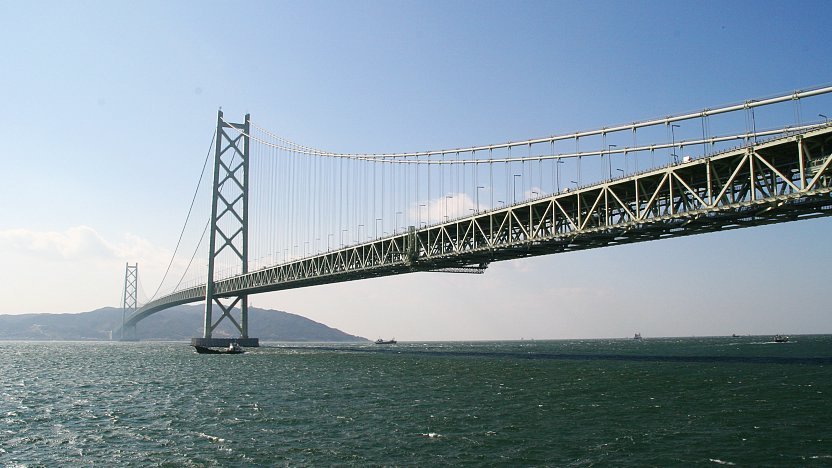

Image source: Internet
In addition to its engineering marvels, the Akashi Kaikyō Bridge also has immense symbolic significance for Japan and is one of the most beautiful bridges in the world. The bridge is considered a symbol of the nation's ability to overcome challenges and adversity. Its construction was a significant step in Japan's post-war reconstruction and economic recovery.
The Akashi Kaikyō Bridge features cutting-edge technologies to ensure its structural integrity and safety. Regular maintenance is performed to repair wear and tear caused by the elements and ensure the continued functionality of the bridge. Technological innovations, such as advanced monitoring systems, contribute to the bridge's continued success as an important transportation link.
Sydney Harbor Bridge
The Sydney Harbor Bridge, an iconic structure that graces Sydney's skyline, combines architectural splendor with practical functionality. One of Australia's most iconic landmarks, this bridge not only connects the city's central business district to the North Shore, but is also a testament to engineering innovation and design excellence.
Completed in 1932, the Sydney Harbor Bridge is a marvel of innovative design. The 503-meter-long bridge arch is not only a technical masterpiece, but also an architectural marvel. The blend of Art Deco and structural efficiency creates an aesthetic appeal that enhances Sydney's skyline.
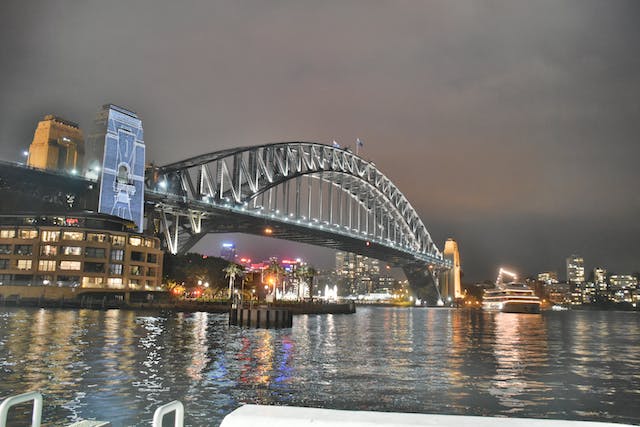
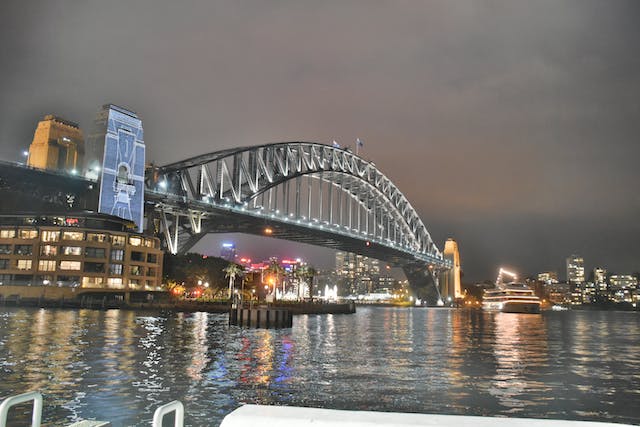
The Sydney Harbor Bridge is known worldwide for its role in the city's New Year celebrations. The annual fireworks display, where the bridge is the center of attention, attracts millions of spectators from around the world. Its image is synonymous with the vibrant, vibrant spirit of Sydney and brings international recognition to the bridge.
Beyond its physical connection, the Sydney Harbor Bridge is deeply rooted in Australian culture. It serves as a symbol of unity, connecting the city's residents and representing the country's progress and resilience. The bridge's silhouette is an integral part of Sydney's identity and can be seen on postcards and in various forms of artistic expression.
The Sydney Harbor Bridge offers a unique and exhilarating experience, offering adventurous visitors the opportunity to participate in guided bridge climbs. Climbing the bridge offers stunning panoramic views of Sydney Harbor and surrounding areas. This tourist activity not only contributes to the local economy, but also increases the bridge's appeal, making it one of the most beautiful bridges in the world.
Ponte Vecchio, Florence
The Ponte Vecchio, the “Old Bridge” of Florence, Italy, is not just a river crossing, but a living testament to the city's rich history and architectural charm. This bridge crosses the Arno River and occupies a unique place in the heart of Florence. It enchants visitors with its medieval architecture and romantic atmosphere.
Built during Roman times, Ponte Vecchio has stood the test of time and witnessed centuries of Florentine history. The bridge originally housed butchers but has been developed over the years. Today it is a symbol of Florence's resilience and cultural heritage, having survived several floods and wars.
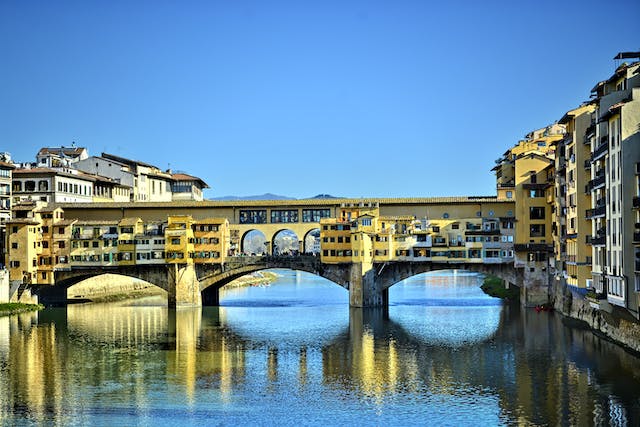
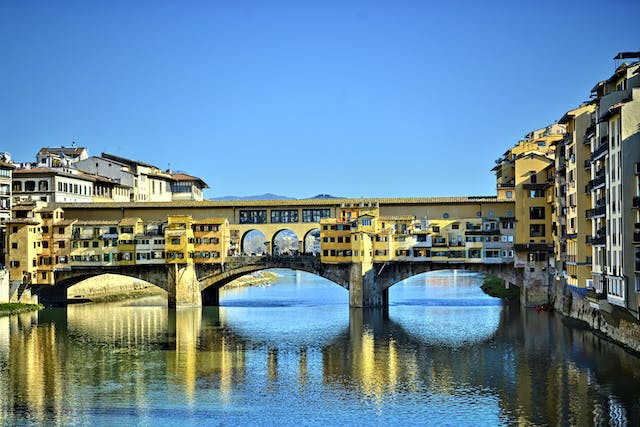
What sets Ponte Vecchio apart is its unique architecture. The bridge is lined with shops, forming a covered walkway that offers a unique shopping experience. Known for jewelry, art and souvenirs, these shops add to the bridge's lively atmosphere. The medieval architecture with its arches and stone buildings transports visitors to a bygone era.
The Ponte Vecchio exudes an incomparable romantic atmosphere. The Arno flows beneath it, providing a picturesque backdrop for couples and artists. The mix of history, architecture and the gentle flow of the river creates an enchanting environment that has inspired poets and painters over the centuries.
The Ponte Vecchio is not just a static landmark, but a dynamic place where artistic events and festivals take place. It is one of the most beautiful bridges in the world. Local artists often display their work on the bridge, adding a touch of creativity to its historical significance. Festivals and events celebrate the bridge's cultural significance and contribute to Florence's vibrant arts scene.
Rialto Bridge, Venice
Venice, with its famous canals, is proud of the Rialto Bridge, a masterpiece of design and refinement. Not only is it a tourist attraction, but it also offers a romantic atmosphere in the heart of the city. Local traditions, such as festivals and events, contribute to the bridge's appeal and cultural significance.
Known for its complex network of canals, Venice is a city that unifies its surroundings surrounded by water. Built in 1591, the Rialto Bridge has been an important crossing since the Middle Ages, connecting the neighborhoods of San Marco and San Polo. Its construction was a significant architectural achievement during the golden age of the Venetian Republic.
The Rialto Bridge features a unique design characterized by a single central arch flanked by two smaller arches. Designed by Antonio da Ponte, this architectural marvel features a curved ramp that allows pedestrians to climb up and enjoy panoramic views of the Grand Canal. The bridge's stone structure and elegant balustrades showcase the craftsmanship of the era.
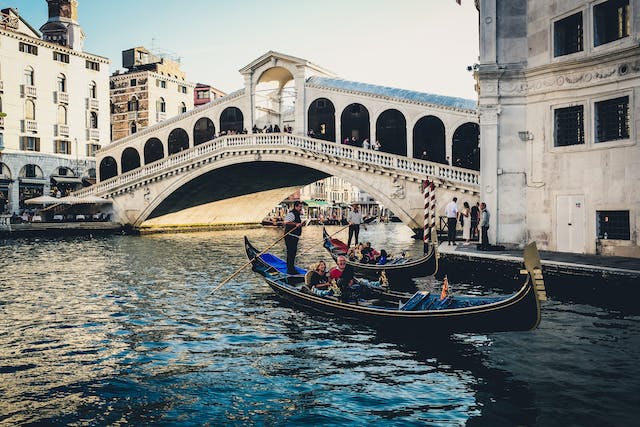

Today, the Rialto Bridge is not only a practical crossing, but also a major tourist attraction. Visitors admire its beauty and the hustle and bustle of the Grand Canal below. The bridge's location amidst enchanting Venetian architecture and its romantic ambience make it a popular spot for couples and photographers seeking the ultimate Venetian experience.
The Rialto Bridge is closely linked to local traditions and events. The nearby Rialto Market has been a commercial center for centuries and the bridge played a crucial role in the city's commercial activities. The annual Historic Regatta, a rowing competition dating back to the 13th century, passes under the Rialto Bridge, adding a historic touch to the setting inside one of the most beautiful bridges in the world.
Bosphorus Bridge, Istanbul
The Bosphorus Bridge in Istanbul, Turkey is not just a physical link across the Bosphorus; it is also a symbolic link between two continents and a testament to Istanbul's rich history and strategic importance. This engineering marvel fits perfectly into the urban landscape, connecting Europe and Asia in a harmonious fusion within one of the most beautiful bridges in the world.
The Bosphorus Bridge, completed in 1973, serves as a major traffic artery connecting the European and Asian sides of Istanbul. Its strategic location at the intersection of the Aegean, Mediterranean and Black Seas makes it a gateway between continents and an important part of Turkey's cultural and economic landscape.
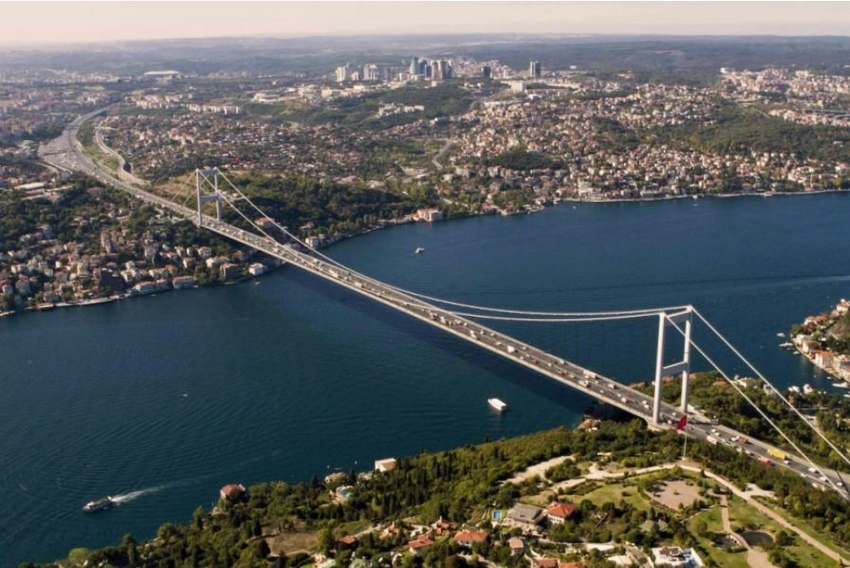
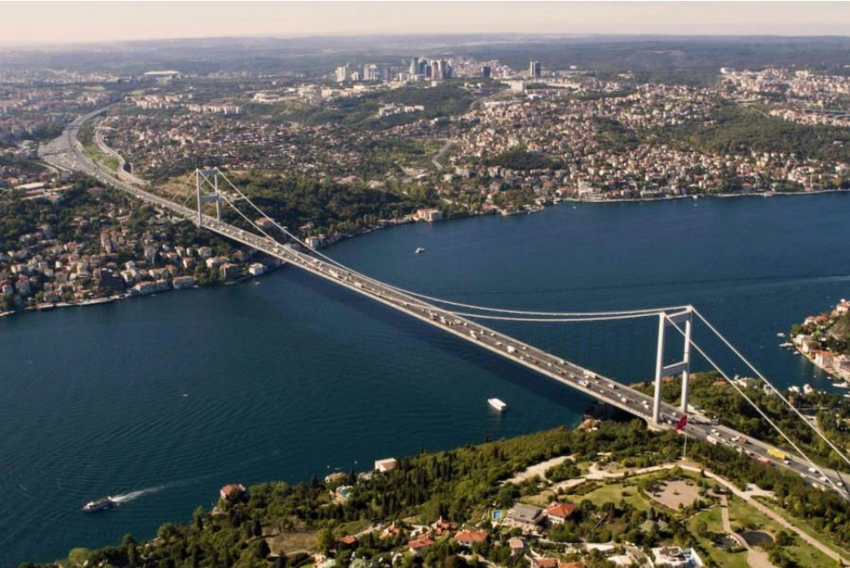
Image source: Internet
The Bosphorus Bridge's distinctive suspended design, with its towering pillars and sweeping curves, is eye-catching and a testament to technical innovation. Suspension cables, firmly anchored to the ground, allow the bridge to span the Bosphorus and form a picturesque silhouette against the Istanbul skyline.
Crossing the Bosphorus Bridge not only offers a seamless journey between Europe and Asia, but also panoramic views of Istanbul. The city's landmarks, including Hagia Sophia, the Blue Mosque and Topkapi Palace, unfold into a stunning panorama, offering travelers and visitors an unforgettable experience.
Millau Viaduct, France
The Millau Viaduct in France is not just a bridge, but an impressive work of modern engineering that gracefully crosses the Tarn Valley. As the highest bridge in the world, this viaduct integrates perfectly into the natural landscape, creating a harmonious balance between human innovation and the beauty of the French countryside.
The Millau Viaduct, completed in 2004, is the tallest bridge in the world. Its tallest tower reaches 343 meters in height. Designed by architect Sir Norman Foster and civil engineer Michel Virlogeux, this cable-stayed bridge is a masterpiece of architectural innovation. It is one of the most beautiful bridges in the world. The narrow, tapered towers and cable-stayed design add to its aesthetics.
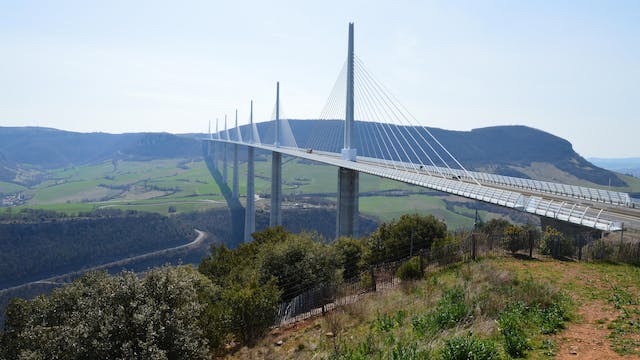
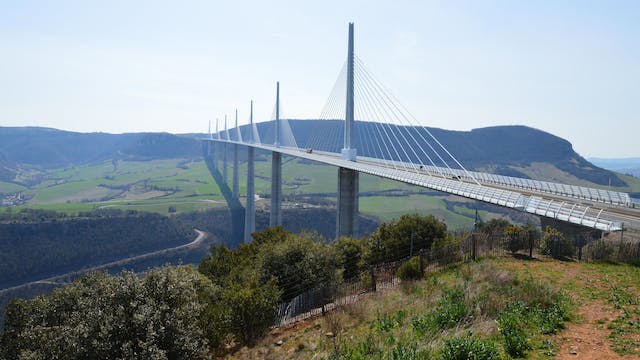
One of the notable aspects of the Millau Viaduct is its minimal impact on the environment. The viaduct's elegant design and use of high-strength concrete reduce the visual impact on the landscape. The bridge appears to float above the valley, offering panoramic views of the surrounding natural beauty.
The Millau Viaduct plays a crucial role in the French transport network, providing a high-speed link between Paris and the Mediterranean coast. In addition to its functional role, the viaduct has become a tourist attraction, attracting visitors from all over the world who admire its architectural brilliance and the stunning views it offers.
Sustainability was a central aspect in the construction of the Millau viaduct. The use of high-strength, self-compacting concrete and the implementation of sustainable construction practices demonstrate a commitment to minimizing the environmental footprint. The viaduct is proof of how infrastructure needs can be combined with environmentally conscious design.
The Helix Bridge, Singapore
The Helix Bridge in Singapore is more than a pedestrian bridge; It is a symbol of contemporary architectural brilliance and technical innovation. An integral part of the Marina Bay landscape, this spiral bridge fascinates visitors with its unique design and its role as a pedestrian link between iconic landmarks.
Completed in 2010, the Helix Bridge is inspired by the structure of DNA with its double-helix spiral design. This impressive structure is not only an aesthetic marvel, but also serves as a symbol of life and renewal. The bridge's complex design includes a series of canopies that provide shade for pedestrians, increasing its functional and visual appeal.
As the sun sets, the Helix Bridge transforms into a fascinating light show. The entire length of the bridge is decorated with LED lights, creating a stunning visual effect, especially with the Marina Bay skyline in the background. The nighttime lighting adds even more appeal to the bridge and contributes to Singapore's reputation as a fascinating cityscape.
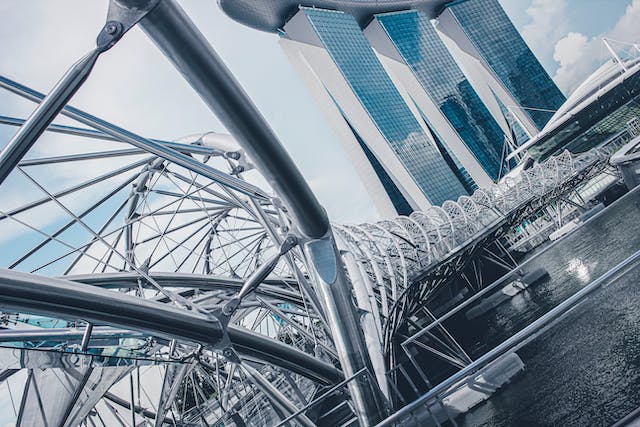
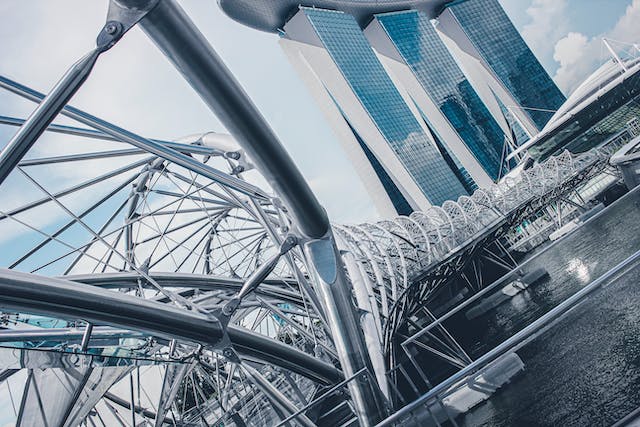
Functionally, the Helix Bridge serves as an important pedestrian link, connecting key landmarks in the Marina Bay area, including Marina Bay Sands and the Singapore Flyer. Its strategic location improves the city's connectivity and allows pedestrians to enjoy a pleasant walk in a charming environment.
The Helix Bridge incorporates sustainable design elements to minimize its environmental impact. The bridge's coverings are strategically positioned to provide shade, thus reducing the heat absorbed by the structure. Furthermore, the use of energy-efficient LED lighting is in line with Singapore's commitment to sustainability and energy conservation.
Brooklyn Bridge, New York
A New York City landmark, the Brooklyn Bridge is a testament to human ingenuity and architectural genius. This historic suspension bridge connects the boroughs of Manhattan and Brooklyn and not only facilitates transportation, but has also become a cultural landmark deeply rooted in the city's identity.
The Brooklyn Bridge, completed in 1883, was a groundbreaking engineering achievement of its time. Designed by John A. Roebling and later supervised by his son Washington Roebling, the bridge introduced innovative suspension techniques. Its twin towers and graceful arches were not only functional, but they also became iconic elements of the New York skyline and are considered one of the most beautiful bridges in the world.
A walk across the Brooklyn Bridge is a quintessential New York experience. The elevated pedestrian walkway offers panoramic views of the cityscape, including the Statue of Liberty, the Manhattan skyline and the East River. The bridge's Gothic-inspired arches and intricate cable patterns add to its visual appeal.
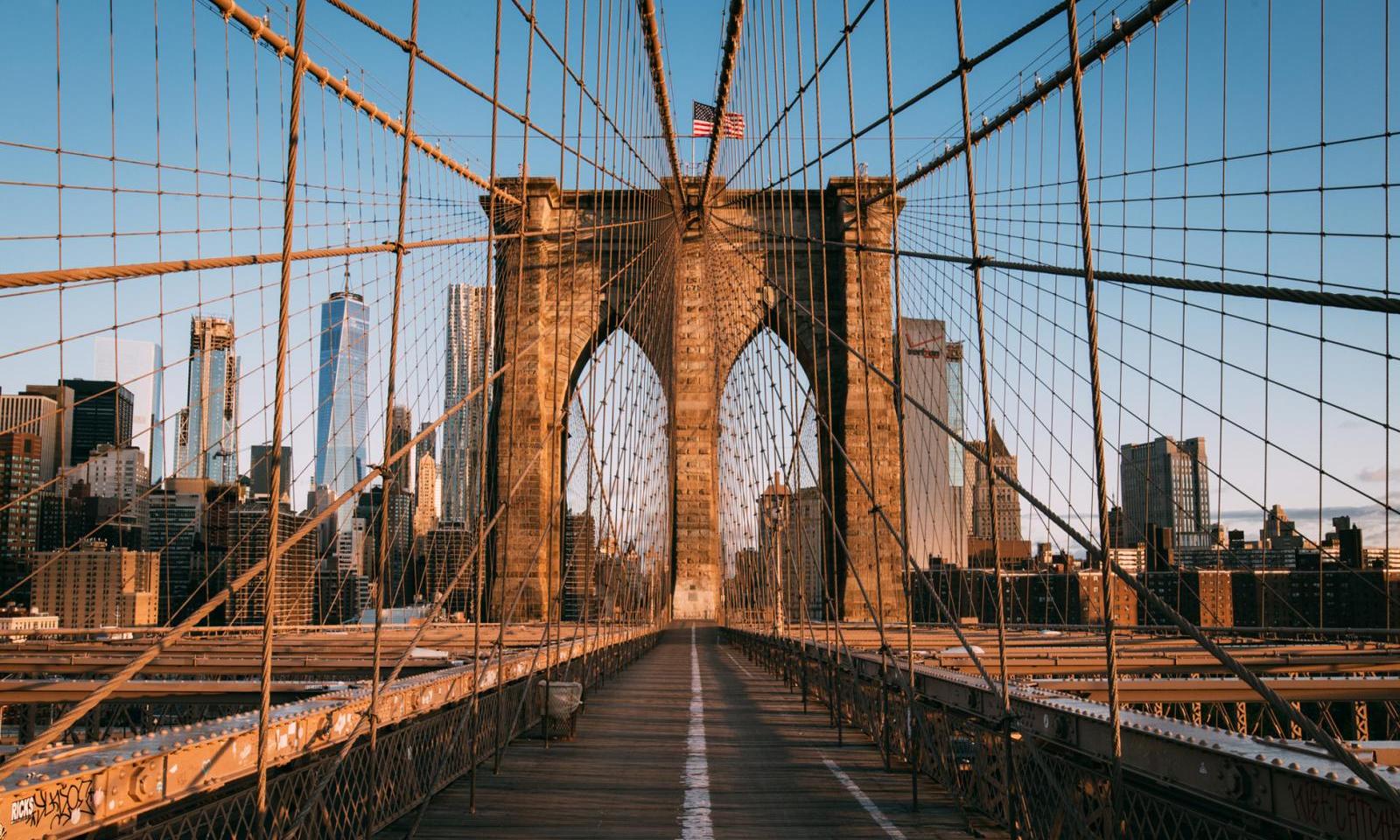
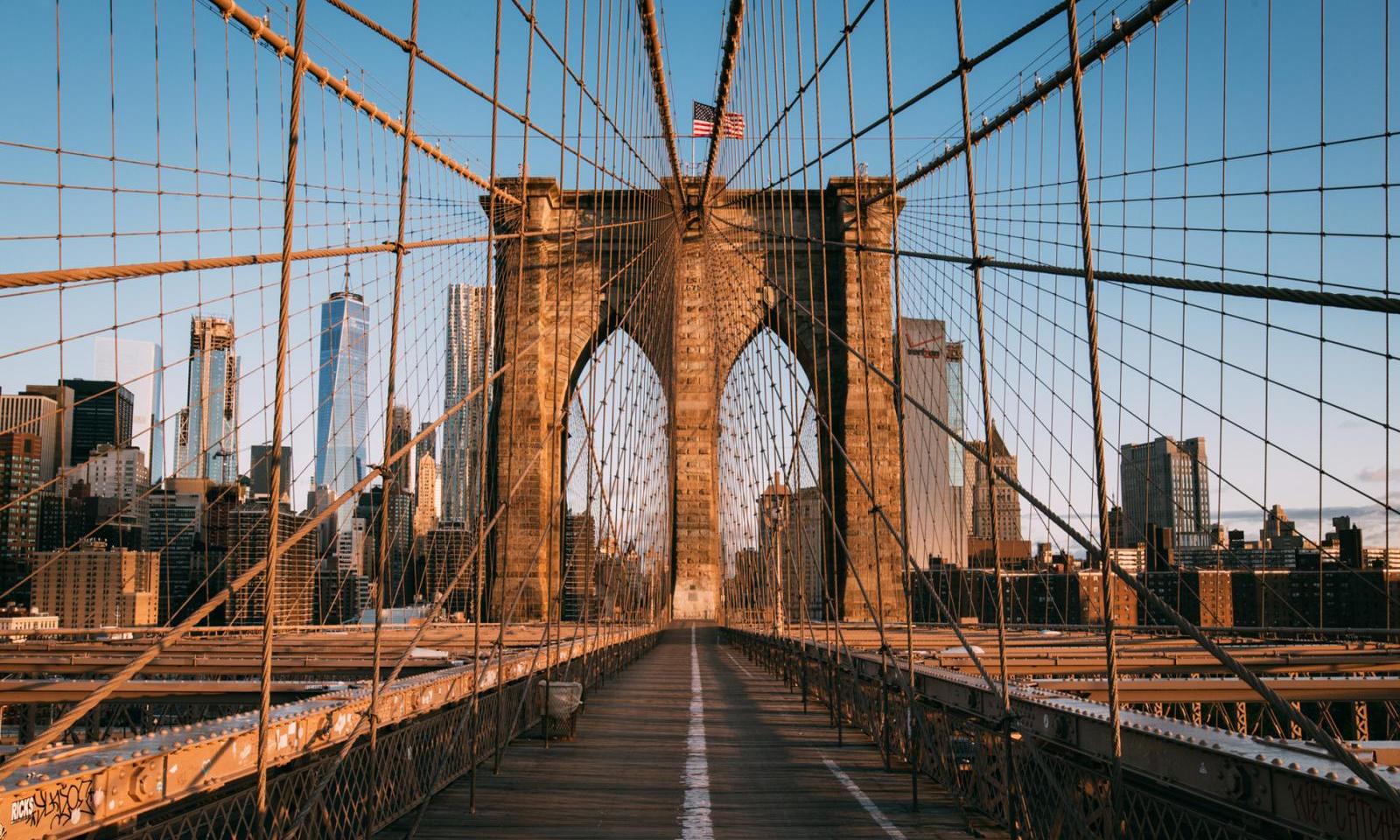
Image source: Internet
In addition to its engineering masterpiece, the Brooklyn Bridge also has deep cultural symbolism. It represents the resilience and determination of the American spirit, which overcame challenges such as a tragic accident and financial setbacks during the construction period. The bridge has featured prominently in literature, art and film, cementing its place in the American consciousness.
As the sun sets, the Brooklyn Bridge transforms into a luminous spectacle. Carefully positioned LED lights along the cables and towers create a romantic atmosphere and make the bridge a popular destination for night walks and photography. The silhouette of the bridge against the city lights gives it even more appeal.
Functionally, the Brooklyn Bridge serves as an important lifeline for commuters, connecting Manhattan and Brooklyn for pedestrians, cyclists, and motorists. Its architecture has the following Bridge projects around the world and influences the fields of civil engineering and urban planning.
Nanpu Bridge, Shanghai
The Nanpu Bridge in Shanghai, China, is not just a structure for crossing a river; it is a testament to modern engineering and a striking feature of the Shanghai skyline. With its unique spiral design, the bridge perfectly combines functionality with aesthetics, connecting bustling neighborhoods.
The Nanpu Bridge, completed in 1991, features a unique spiral approach. The bridge's spiral ramps serve both aesthetic and practical purposes, allowing for gradual ascents and descents, which is particularly beneficial during heavy traffic flows. The design adds a touch of architectural innovation to the dynamic urban landscape, making this bridge one of the most beautiful in the world.
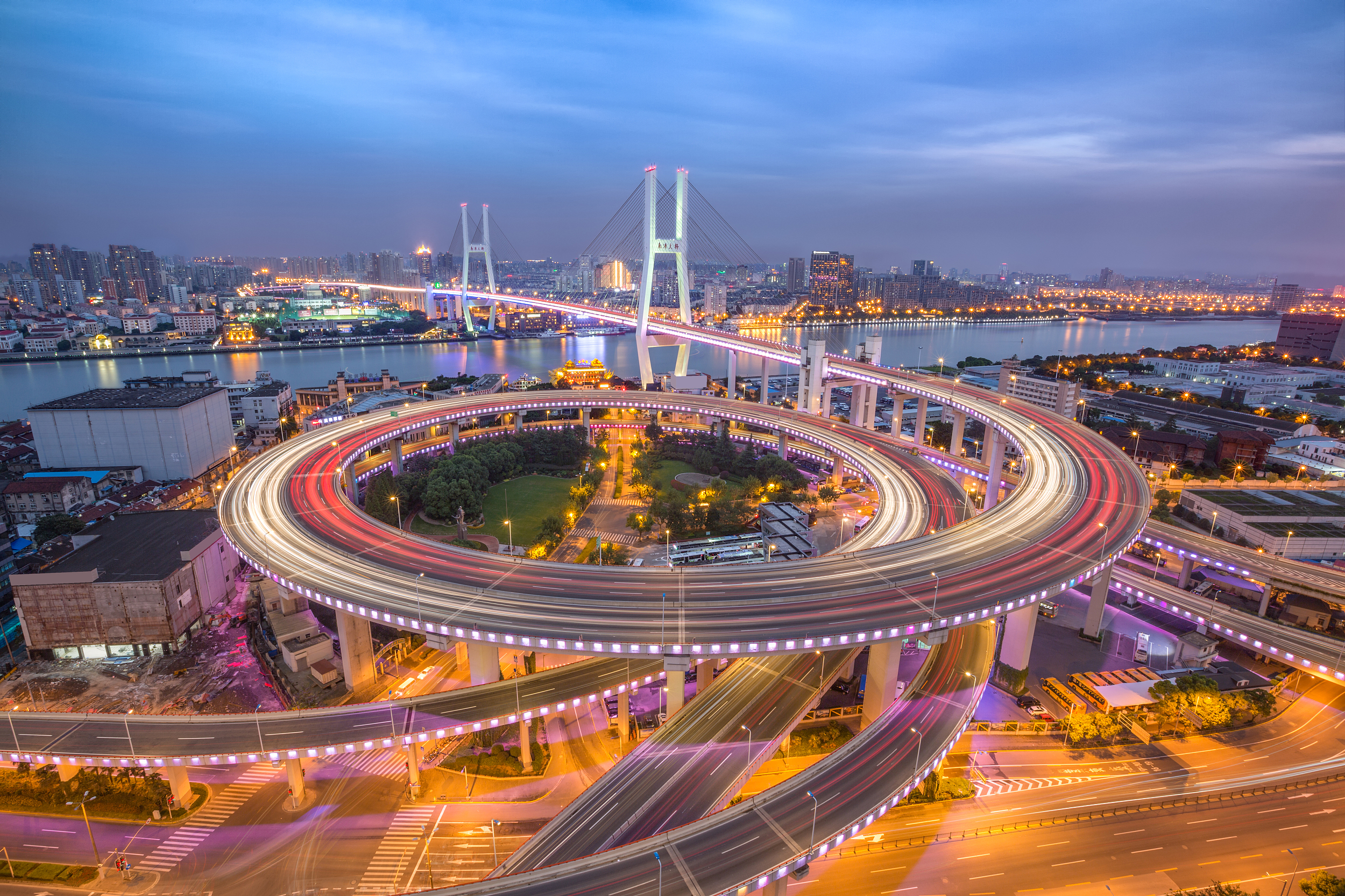
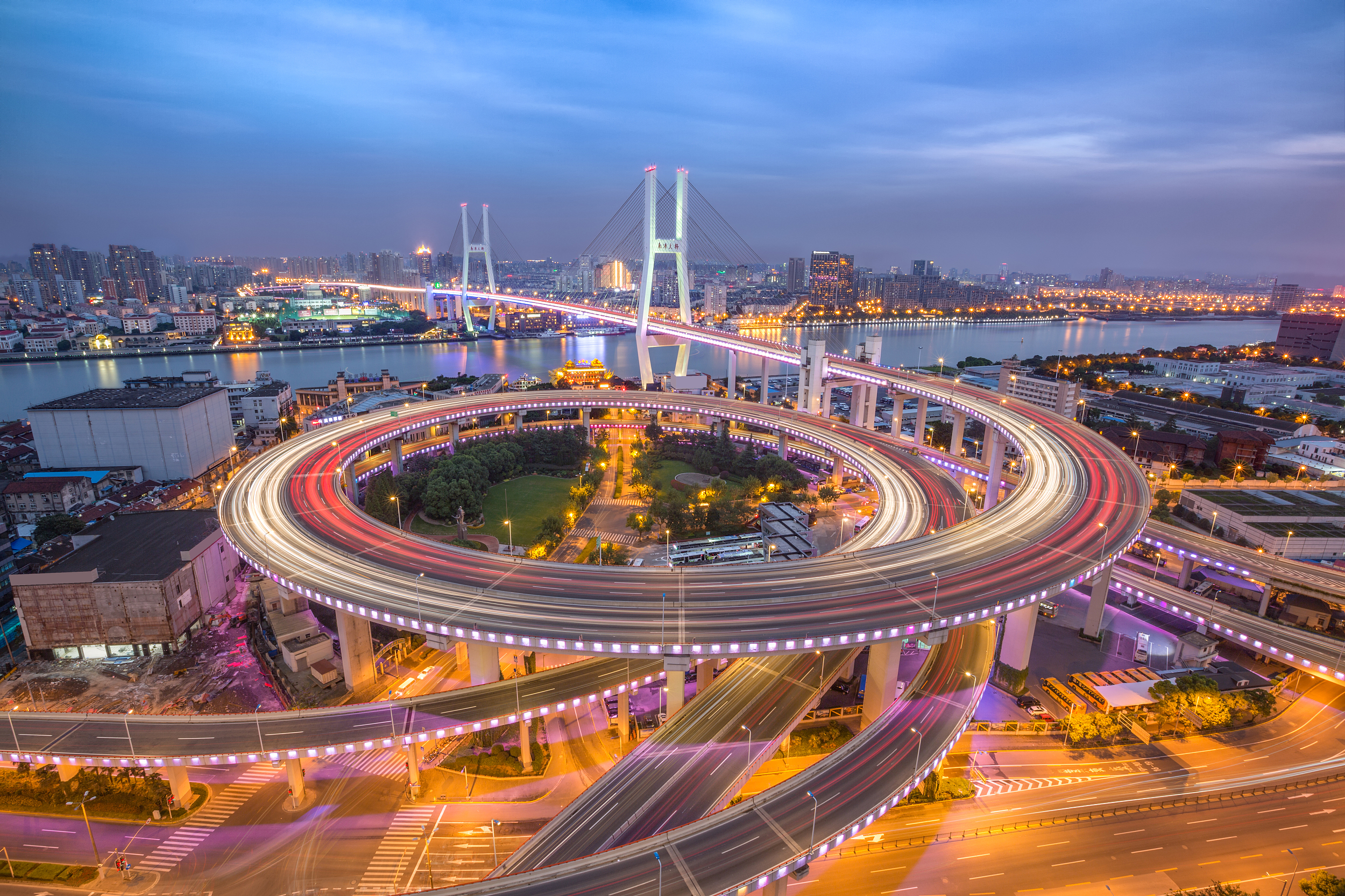
Image source: Internet
The Nanpu Bridge plays a crucial role in connecting Shanghai's Puxi and Pudong districts. Puxi, on the west bank of the Huangpu River, is known for its historic charm and shopping malls, while Pudong, on the east bank, is known for its modern skyscrapers and the city's financial center. The bridge serves as an important link for passengers and contributes to the city's economic vitality.
As darkness falls, Nanpu Bridge transforms into a luminous spectacle. LED lights carefully positioned along the spiral ramps create a fascinating visual experience. Lighting the bridge at night highlights the city's modern skyline and provides spectacular views for residents and visitors.
In addition to its aesthetic characteristics, the Nanpu Bridge features technological advances that guarantee its structural resilience. The bridge is equipped with seismic isolation devices to withstand the region's occasional earthquakes. This commitment to security reflects Shanghai's commitment to modern infrastructure and urban development.
The Nanpu Bridge is not just a transport link, it is an integral part of Shanghai's identity. Its distinctive design and strategic location make it a recognizable symbol of the city's development into a global metropolis. The bridge reflects Shanghai's ability to combine tradition and modernity.
Banpo Bridge, Seoul
The Banpo Bridge in Seoul combines art and technology and features an artistic water fountain. In addition to its functional role, it has become a recreational area with cultural significance. Nightly light shows and city views add to its charm, and the bridge often hosts community events and festivals that foster a sense of community.
One of the prominent features of the Banpo Bridge is the Moonlight Rainbow Fountain, recognized by the Guinness Book of Records as the longest bridge fountain in the world. This fascinating spectacle of water and light transforms the bridge into a dazzling spectacle at night, creating a harmonious mix of nature and technology. These characteristics make it one of the most beautiful bridges in the world.
The Moonlight Rainbow Fountain is not a static spectacle, but a dynamic water show synchronized to music. The choreographed water jets, illuminated by bright LED lights, dance to the rhythm of the music, creating an immersive and enchanting experience. This nighttime show has become a symbol of Seoul's modernity and artistic expression.
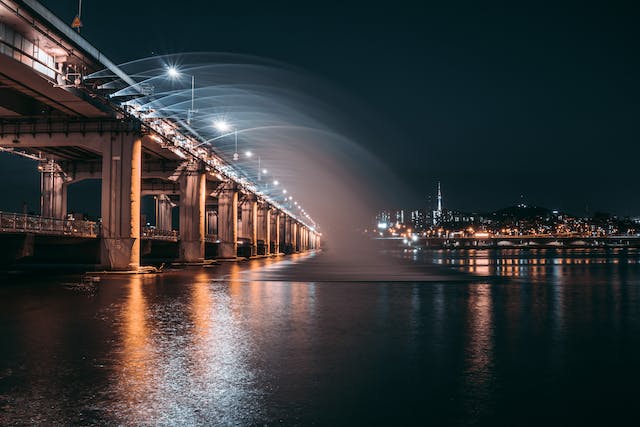
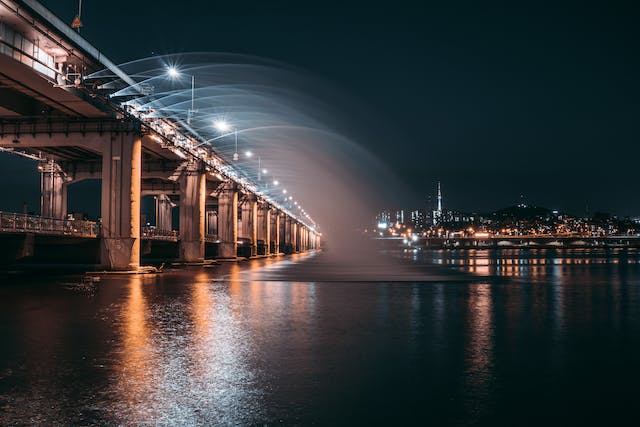
In addition to the fountain, Banpo Bridge features a rainbow-shaped pedestrian walkway that spans both sides of the bridge. This path offers pedestrians a panoramic view of the Han River and the surrounding cityscape. Careful integration of a pedestrian-friendly area improves the bridge's accessibility and attractiveness.
The Banpo Bridge is not only a functional crossing, but also an integral part of the city's green spaces. The nearby Banpo Hangang Park offers residents and visitors a peaceful retreat along the Han River, with walking trails, gardens and recreational areas. The bridge serves as a connecting element within this urban oasis.
The technological aspects of the Banpo Bridge go beyond the spectacle of the fountains. The bridge is equipped with eco-friendly LED lights that contribute to energy efficiency and sustainability. This commitment to environmental aspects is in line with Seoul's efforts to balance urban development with ecological awareness.
Twelve Apostles Bridge, Australia
Nature and architecture intertwine at the Bridge of the Twelve Apostles, in Australia. It adapts perfectly to the landscape, takes environmental factors into account and focuses on sustainability. Indigenous connections and cultural histories further reinforce the bridge's significance, creating a unique blend of nature, culture and engineering.
Completed in (year), the Twelve Apostles Bridge serves as the gateway to one of Australia's most famous natural attractions. The Twelve Apostles, a series of limestone pillars rising majestically from the Southern Ocean, are a sight to behold. The bridge improves accessibility and allows visitors to comfortably experience the rugged beauty of the coast.
The Great Ocean Road, which runs along Victoria's coast, is known for its scenic beauty, and the Twelve Apostles Bridge fits perfectly into this iconic route. Its engineering marvel complements the natural wonders, providing a fascinating experience for travelers exploring this stretch of coast.
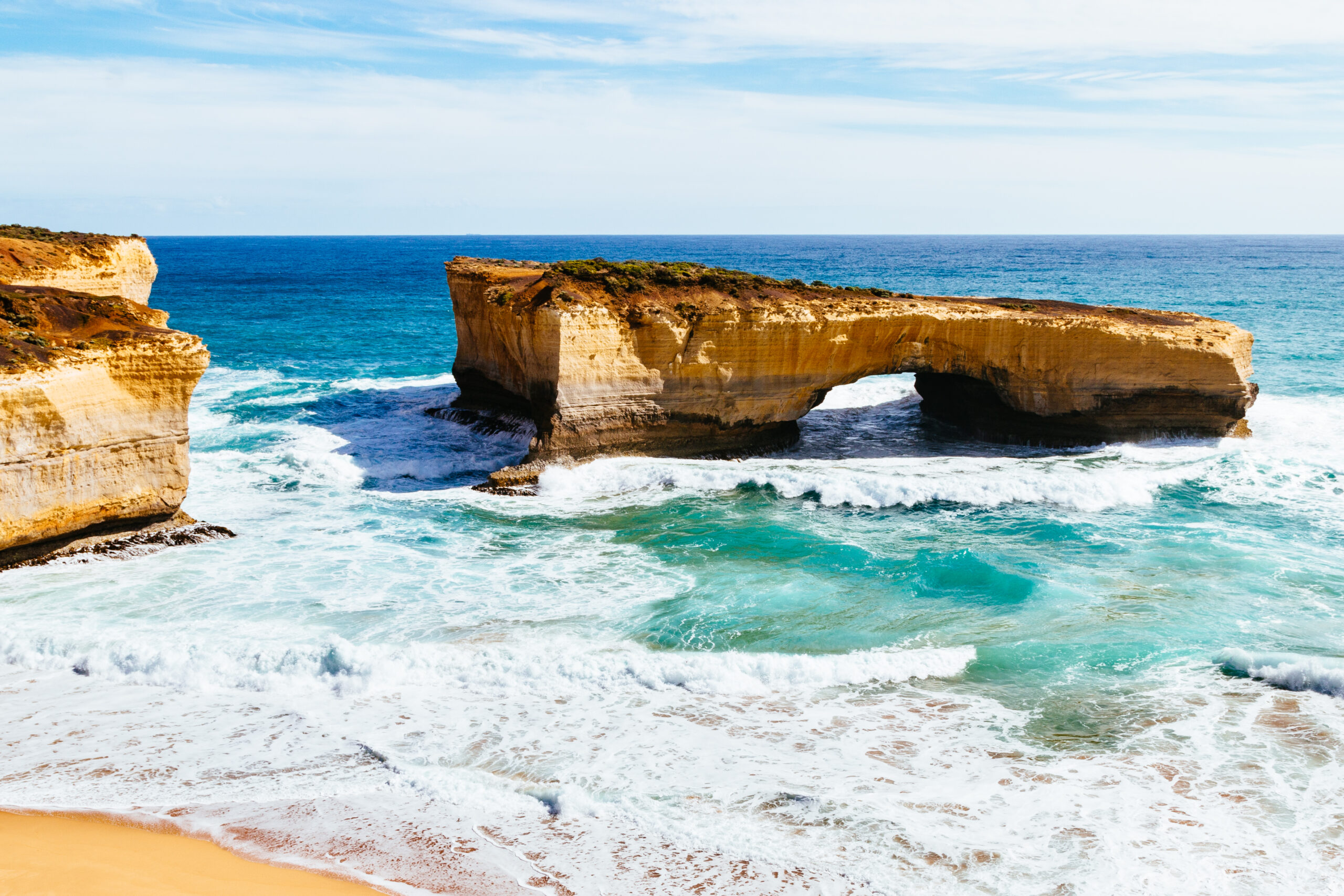

Image source: Internet
The bridge design is a balance between functionality and aesthetics. Its architecture harmonizes with the coastal landscape and offers open views of the Twelve Apostles and the surrounding natural beauty. The bridge becomes part of the landscape and enriches the experience of those who cross the area.
Australia's commitment to environmental protection is reflected in the design of the Twelve Apostles Bridge. Sustainable building materials and environmentally friendly practices minimize the impact on the surrounding ecosystem. The bridge serves as a model for combining infrastructure development and ecological responsibility.
The Bridge of the Twelve Apostles not only serves as a passage but also enriches the entire tourist experience. Interpretive centers near the bridge provide information about the geological formations, indigenous history and the importance of preserving this coastal jewel. Visitors can engage with the cultural and natural aspects of the area.
In this article we talk about the most beautiful bridges in the world and their important characteristics and technical aspects. In addition to the bridges discussed above, there are many other bridges that are aesthetically and technically important.

